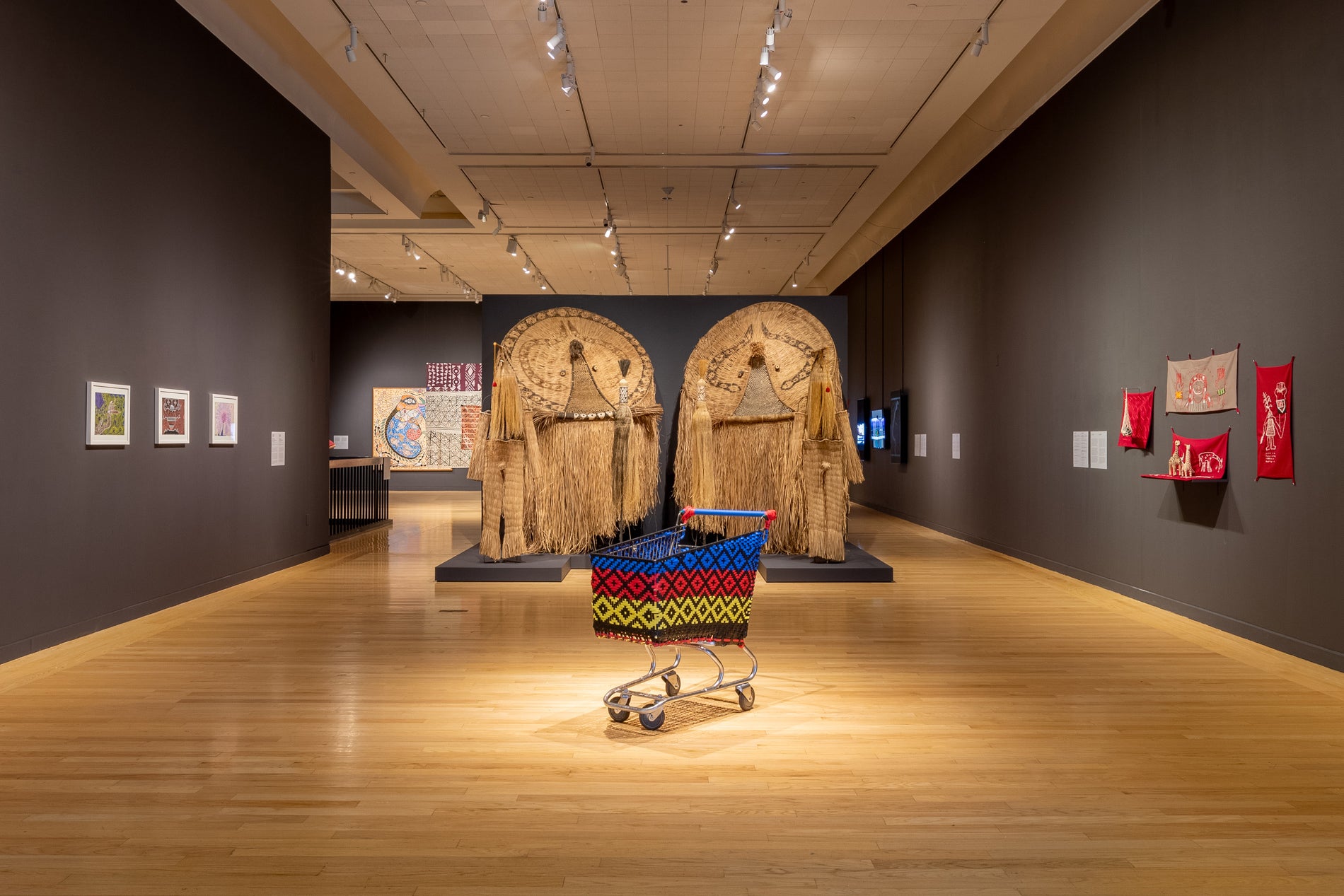
The Curator is Present
Presiding over the entire space, via a video on continuous loop, is Naine Terena (member of the Terena Indigenous people of the Brazilian State of Mato Grosso do Sul). An artist, activist, and educator, Terena curated Véxoa’s original iteration at the Pinacoteca de São Paulo in 2020, the first Indigenous-led exhibition to be held at a major Brazilian art museum. She also curated the show’s only North American presentation at Tufts. “By having her on a monitor here, we’re trying to think about curatorial voice and presence,” said Deitsch.
Throughout the video, adapted from a lecture given virtually at the Clark Art Institute, Terena discusses the changing conceptions of Indigenous art and its relationship to art history and the contemporary art world. By virtue of surviving the process of colonization, Indigenous art, she argues, represents a concept of “internal art” that “does not follow what we understand as art in a classic way” or conform to Western canonical standards.
Daiara Tukano, “Yiki Mahsã Pâti (World of the Forest Spirits),” 2018, and “Muhipu Saãrô (Sunset),” 2018.
Photo: Mel Taing
Fittingly, the video is positioned beside two paintings by Daiara Tukano, an artist and activist whose practice centers on spiritual traditions such as the use of ayahuasca to achieve mystical visions, known as hori. At first glance, the colorful geometric designs conform to notions of modern abstract art and color theory. Yet the patterns represent the traditional graphics of baskets, ceramics, and body art of the Tukano people.
Connecting contemporary art to a traditional cosmology, Tukano’s images evoke aspects of existence that are usually invisible to the eye. Much like the exhibition itself, the paintings serve as portals into another way of thinking and being that resists Western epistemologies.
“When you spend time in front of these pictures, you get immersed in a totally different vision of the world that is very central to Indigenous culture. From this perspective, you realize they have an agency of their own,” Avolese said.
Kaya Agari, “Untitled,” 2021–2023.
Photo: Mel Taing
In the next room, Kaya Agari’s hanging panels featuring patterns based on traditional Kywenu body markings perform a similar transposition. Suspended from the ceiling, the fabric panels invite viewers to walk through the intimate spaces they create. The subtle, almost eerie movement of the fabric in response to passers-by at once recalls the ancestral narratives on which the designs are based and roots the visitor firmly in the present.
“It’s about a tradition transported into different materials. These are visuals that we think we understand, but we really don’t,” said Deitsch. “So much of art is about creating access into other worlds and other cultures, developing within us empathy for histories and traditions that we may or may not have access to.”
